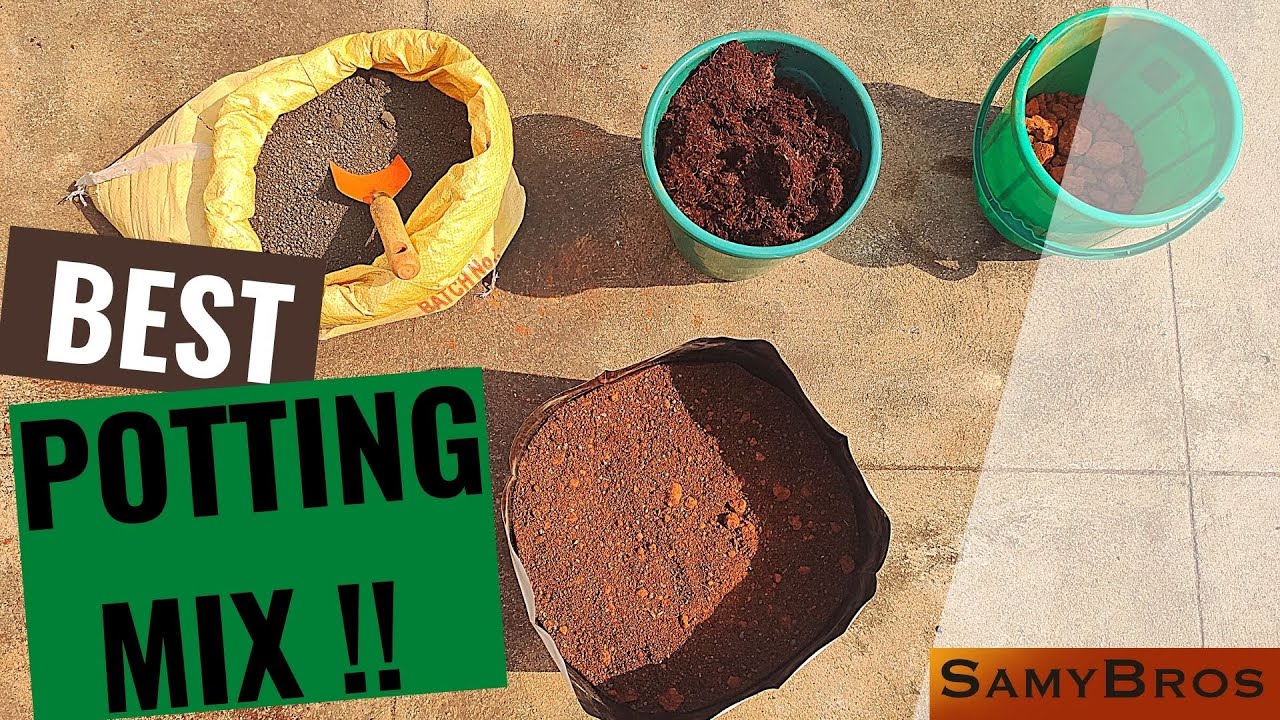Q: I am planning a new herb garden for my patio, and will be growing them in pots. What is the best soil to use?.
A: Herbs are the perfect addition to a sunny outdoor living space, and are easy to grow. But it’s important to get the soil mix right for an herb garden, especially if you’re growing it in a pot.
One of the most important factors for happy, healthy herbs is proper drainage. It is very important to use containers with holes in the bottom and put the pots on pot feet. The soil you use must also drain well. This is especially the case for woody, Mediterranean herbs, such as lavender and rosemary. The exception is mint, which prefers its soil to be a little more moist.
Using a nutrient-rich soil mix can also help these plants thrive. Also, think about the pH level. Some plants, like sage and parsley, like neutral to alkaline soil. Others, such as dill, prefer a more slightly more acidic growing environment.
This picture by Stephanie Frey and Alamy Stock Photo shows how to use good potting mix to help herbs grow.
Growing fresh herbs at home is one of the joys of gardening. Adding a pinch of homegrown basil, thyme or rosemary to your meals brings incredible flavor and aroma But to get the best out of your herb garden, whether it’s in the ground or in containers, it all starts with the potting soil Choosing the right potting mix is key to growing thriving, productive herbs.
In this comprehensive guide, we’ll cover everything you need to know about selecting the ideal potting soil for herbs. We’ll look at the different types of potting mixes, key ingredients, and tips on creating your own custom herb potting soil. By the end, you’ll be ready to get your herb garden off to a vigorous start with the perfect soil blend.
Why Potting Mix Matters for Herbs
Getting the potting mix right for herbs is important because it provides
-
Drainage – Most herbs need soil that drains well to prevent rotting of roots. A light, porous potting mix prevents waterlogging.
-
Nutrients – Herbs need a balanced supply of key nutrients like nitrogen, phosphorus and potassium for healthy growth. The right potting mix has fertilizers to feed herbs without excess salt buildup.
-
Aeration – Herb roots need airflow in the soil. A light, loose potting mix allows air to permeate and prevents compaction.
-
Water retention – Herbs shouldn’t dry out too quickly between waterings. An ideal potting mix retains some moisture while still draining well.
Key Ingredients to Look For
The best potting mixes for growing herbs contain a blend of ingredients that create the ideal growing environment. Here are key components to look for:
Peat or Coir
Peat moss or coconut coir forms the base of most potting mixes. Peat helps retain moisture and provides space for roots to spread. Coir offers similar benefits in a renewable, sustainable form. Look for potting soils with 30-40% peat or coir content.
Compost
Compost adds important organic matter and nutrients. Compost increases drainage and moisture retention. Aim for at least 20% compost in an herb potting mix.
Perlite or Vermiculite
These mineral aggregates create air pockets in soil. Perlite and vermiculite improve drainage and aeration. Look for at least 20% perlite or vermiculite in potting soil for herbs.
Fertilizer
Potting mixes should contain slow-release fertilizers to provide a steady feeding over time. Choose organic fertilizers to avoid buildup of synthetic salts.
Loam
Loamy soils with a blend of sand, silt and clay provide an ideal texture for herbs. Loam creates the right balance of drainage, aeration and moisture retention.
Types of Potting Mixes for Herbs
When shopping for potting soil, you’ll find a variety of premade mixes formulated for different uses. Here are some top options for growing herbs:
All-Purpose Potting Mix
As the name suggests, all-purpose mixes work for a wide variety of plants including herbs. They contain a blend of peat or coir, compost, perlite or vermiculite. All-purpose mixes offer great drainage and moisture retention.
Herb & Vegetable Potting Mix
Tailored specifically to herbs and vegetables, these mixes provide excellent drainage and aeration for healthy root growth. They contain fertilizers to feed herbs without buildup of synthetic salts.
Moisture-Control Potting Mix
These mixes use water-absorbent gels to reduce watering frequency for herbs. The gels release moisture back into the soil as it dries out. Use for herbs prone to drying out like basil.
Organic Potting Mixes
Organic mixes are made with 100% natural ingredients like compost, coconut coir, earthworm castings etc. They provide slow-release organic nutrition. Great for herb gardeners who want to grow “chemical-free”.
Seed Starter Mixes
Extremely fine, lightweight mixes that provide the perfect environment for sprouting herb seeds and cuttings. They ensure good moisture and airflow for delicate new roots.
Creating Your Own Custom Herb Potting Mix
For full control over ingredients, you can create your own custom herb potting soil. Here is an easy recipe:
- 1 part peat moss or coconut coir for moisture retention
- 1 part perlite or vermiculite for drainage and aeration
- 1 part compost for organic matter and nutrients
- Optional: loam to improve texture
Thoroughly mix the ingredients together in a large tub or wheelbarrow. Your ideal herb potting mix is ready to use! Custom blends allow you to cater the potting soil to the exact needs of your herbs. And you can adjust and tweak the recipe over time.
Herb-Specific Potting Mix Tips
While most herbs thrive in a well-draining, light potting mix, some varieties have specific soil preferences:
-
Mediterranean herbs like rosemary, thyme and oregano prefer free-draining, alkaline soils. Add lime to increase pH.
-
Mint grows best in rich potting mix with lots of compost to keep it vigorous and prevent legginess.
-
Basil likes soils on the acidic side. Use an all-purpose mix and avoid lime.
-
Chives grow well in most potting soils as long as they don’t stay wet for long.
Getting the potting mix right goes a long way towards growing abundant herbs. Follow these tips and you’ll have the perfect soil environment for your herb garden to thrive.
Frequently Asked Questions About Potting Mixes for Herbs
Should I use potting soil or garden soil for herbs?
Potting mixes are better suited for growing herbs in containers than garden soil. Potting mixes are sterile, lightweight, and provide better drainage and aeration critical for healthy herb roots.
Do I need to add fertilizer to potting soil for herbs?
Most potting mixes contain some slow-release fertilizer to feed herbs for 2-3 months. You can add organic granular fertilizer or compost tea a few weeks after transplanting herbs to give them added nutrition.
How often should I replace potting mix for herbs?
In containers, potting mix loses nutrients after about one growing season. Each spring, remove the top 1-2 inches of old mix and replace with fresh potting soil to replenish nutrients.
Can I reuse potting mix for herbs?
It’s best to use fresh sterile potting mix when first planting herbs to prevent disease. But at the end of each season, you can amend and reuse potting mix by blending in compost or organic fertilizer.
What is the best store-bought potting mix for herbs?
Quality brand-name potting mixes like Miracle-Gro and Espoma offer excellent all-purpose and herb & vegetable mixes. Look for mixes containing peat/coir, perlite, compost and slow-release fertilizer.
When should I repot herbs into larger containers?
Herbs often outgrow small starter pots within a few weeks. Transplant seedlings into 4-6 inch pots when roots fill the starter pots. Shift herbs into larger containers as they become rootbound every 2-3 years.
Conclusion
Choosing the ideal potting soil is one of the keys to success when growing herbs. Use this guide to select a store-bought mix or create your own custom blend tailored precisely to your herbs. With the perfect light, nutrient-rich and well-drained potting mix, your herb garden will thrive and provide an abundant harvest of delightfully fresh flavors.
How to make a potting mix for herbs
For most herb planters, a good potting mix like Burpees Premium Organic Potting Soil from Amazon should be fine. But you can also make your own.
To do so, gardening expert Tony ONeill of Simplify Gardening recommends combining good-quality compost, coir, and perlite or vermiculite. Keep the ratios roughly equal.
Compost acts as a slow-release fertilizer, providing essential nutrients as it breaks down, he says. Its a good opportunity to use homemade compost, if you have it.
He goes on to say that coir, which is a waste product from the coconut industry, helps the soil keep just the right amount of moisture while letting extra water drain away. You can shop SpongeEase coco coir bricks from Amazon, which are well-rated amongst gardeners.
Perlite or vermiculite contributes to the soils porosity, promoting aeration and preventing root rot, Tony explains. Again, it’s easy to find both of these things online. For example, you can buy Perfect Plants organic vermiculite or Perfect Plants organic perlite from Amazon. Alternatively, you can mix in plenty of coarse grit which is also effective at aiding drainage.

Tony ONeill is an accomplished gardening expert, author, and educator. With a goal of making gardening easier, he has inspired many people through his popular YouTube channel and website, SimplifyGardening. com.
Good drainage is essential for most herbs( credit: Anne Gilbert / Alamy Stock Photo)
Tony also says that the specific soil mix might need to be changed a little depending on the herb species, since each herb has its own needs.
When it comes to pH levels, adding lime or wood ash will make the soil more alkaline. On the other hand, adding acidifying substances like sulfur can lower pH levels. If you really want to take extra care of your herb planters, check the pH of the soil and make changes based on what your herbs like.
Getting the soil right is only the first step in successfully growing herbs in pots. Diana Cox of TheGardeningTalk says that once you’ve picked out the right potting soil, don’t forget to water and feed your herbs every few weeks. com. Be sure to position them somewhere where they get plenty of sunshine, too.
With proper care, your herbs will flourish in their new environment, Diana says. You can enjoy them for months, whether you choose to look at them in the garden or use them in the kitchen.
Top 5 Best Soil For Herbs Herb Garden Answer
- The Ultimate Guide to Growing Strawberries in Raised Beds - August 8, 2025
- No-Dig Garden Beds: The Easiest Way to Grow a Beautiful Garden - August 6, 2025
- How to Protect and Preserve Wood for Raised Garden Beds - August 6, 2025

